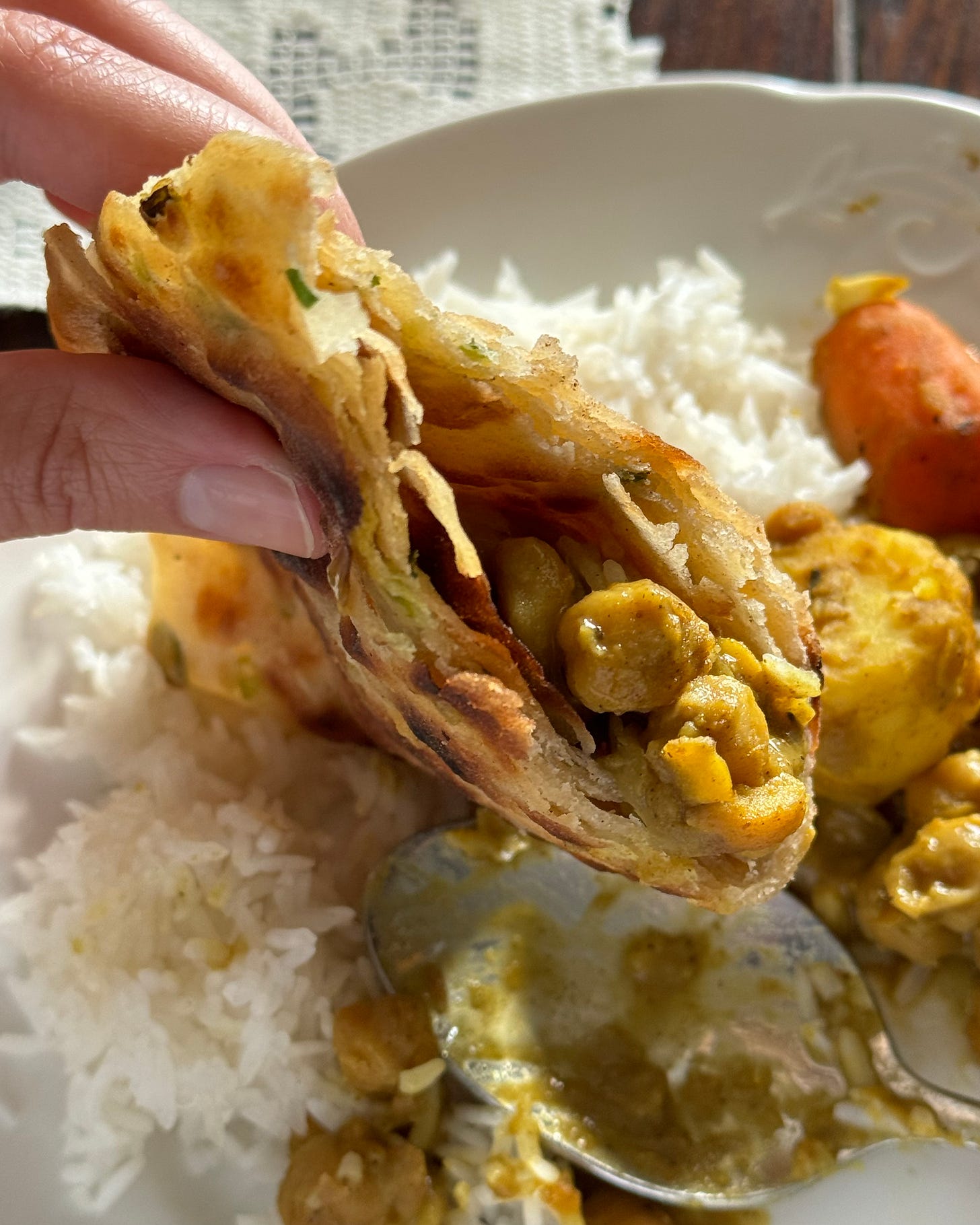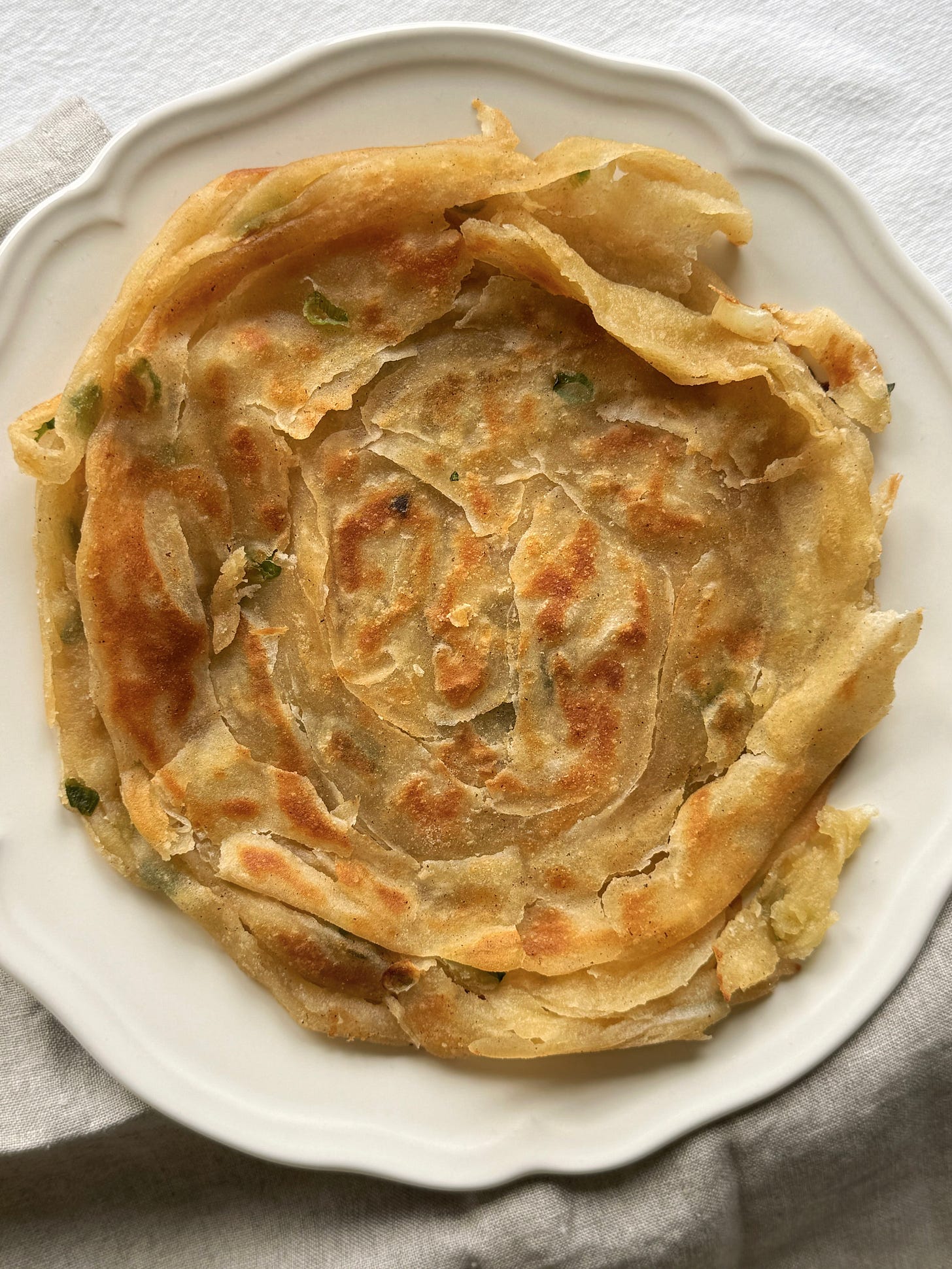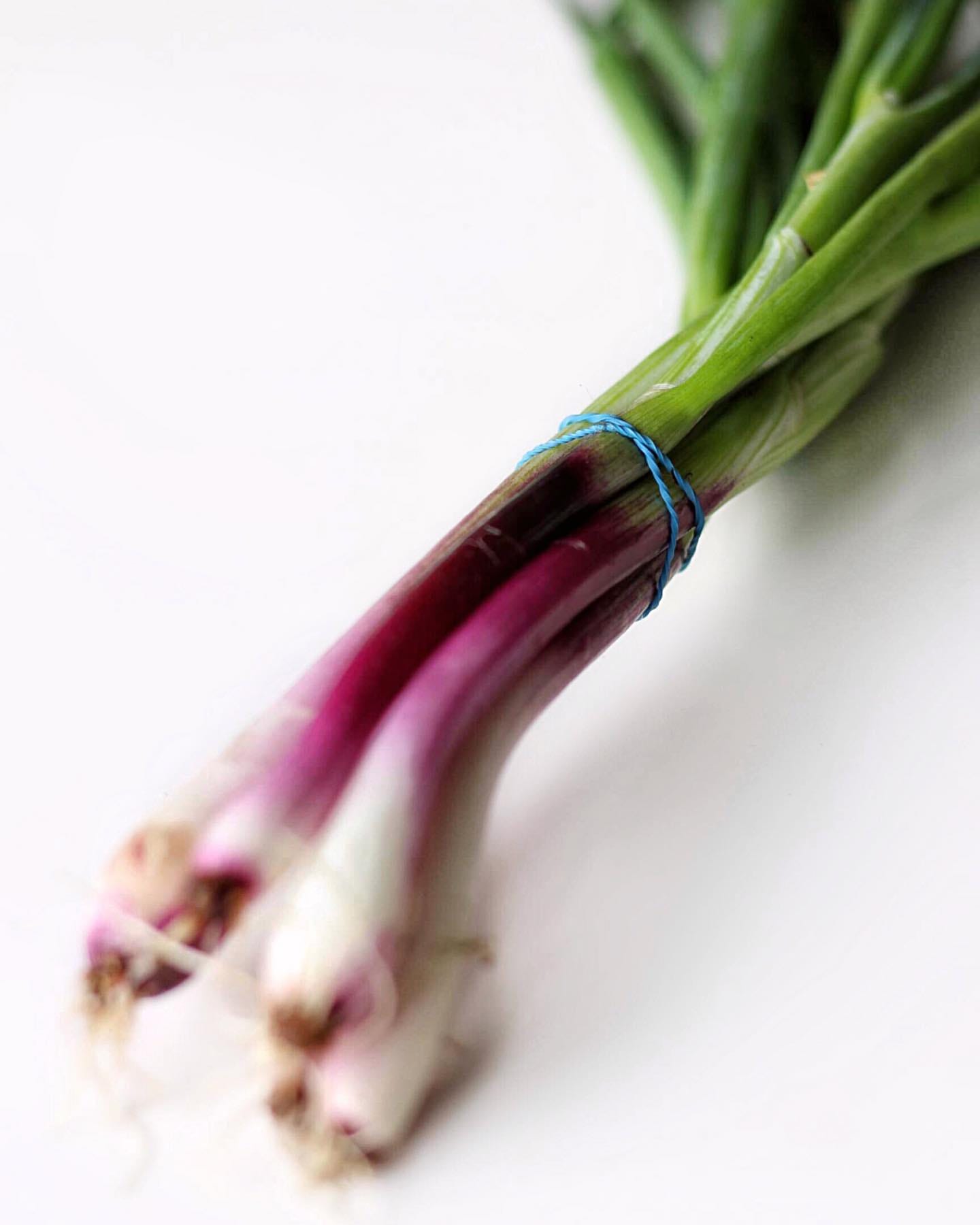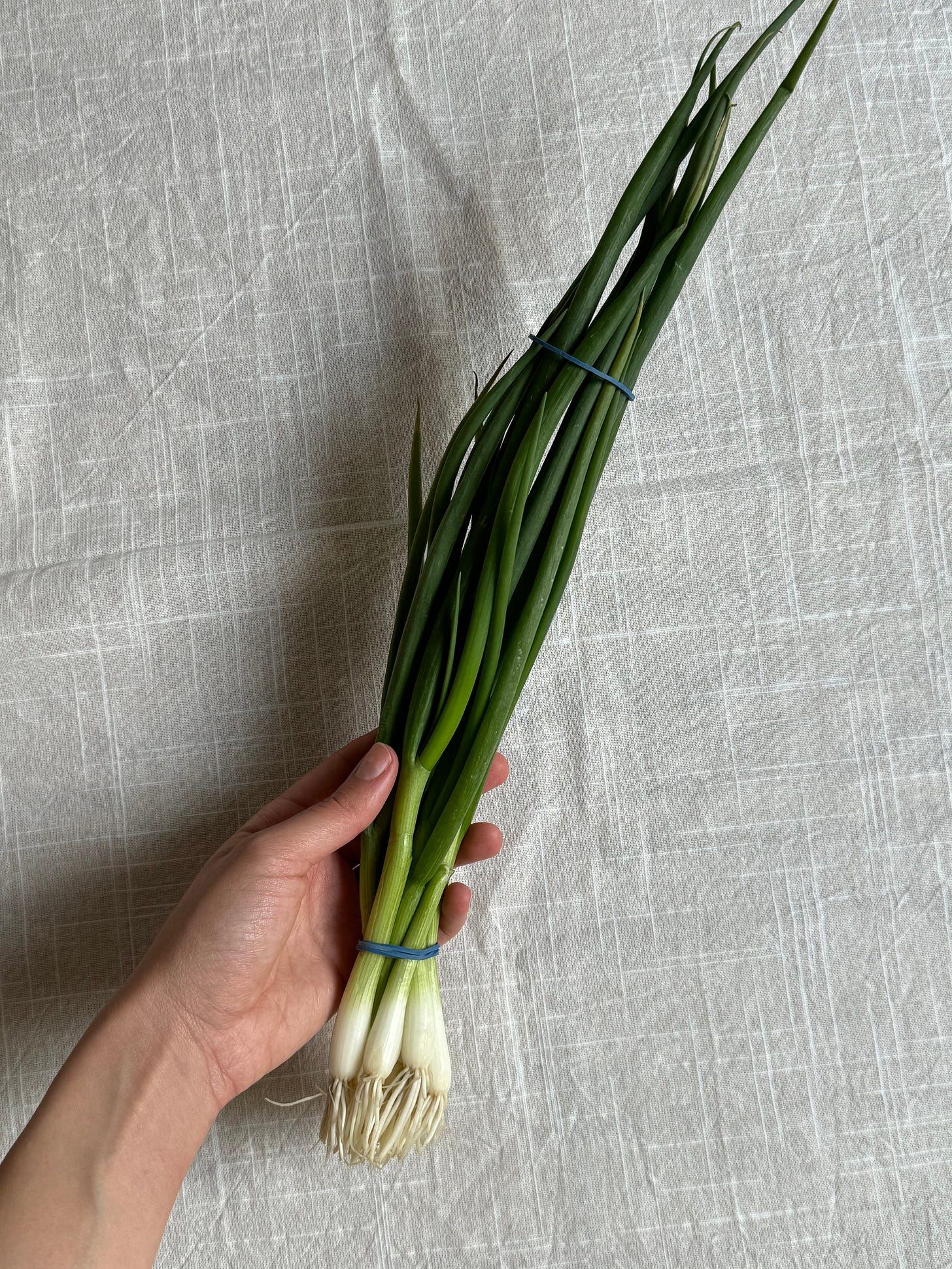Allô! 👋
Hello, and thank you for being here! Welcome (back) to the seasonal sundays section of the good food at home newsletter, where every week we take a closer peek at produce at its peak — with a short introduction, a recipe, and a (sometimes related) cooking Q&A. If you’re a new subscriber and would like to read the previous issues, you can click here to find them!
Chives, scallions or green onions*, ramps and ramsons (wild leeks and garlic!), shallot shoots, spring onions, overwintered leeks and baby leeks, green garlic — for many of us, this mouthful of diverse young alliums represent the first true taste of spring. And, oh, what a zing they bring!
Before local radishes and asparagus — let alone rhubarb and peas — are ready for harvest (but well after we’ve cultivated a burgeoning taste for all things young and fresh), immature alliums are often there for us, first in line to grace our springtime plates and palates. While some don’t get as much fanfare as others, each variety has its virtues and ought not be shunned in favour of a more fashionable cousin (sure, ramps† are cool, but don’t forget that scallions are too).
*they mostly designate the same thing but, on occasion, “scallion” will specifically refer to a bunching allium species that never forms a bulb, while “green onion” might explicitly mean a young onion that just hasn’t had a chance to form a bulb yet
†a good reminder to please forage responsibly
Milder than their more mature counterparts, early spring alliums know how to pack a flavour punch in the gentlest of ways. Not yet overly strong nor pungent, these are tender aromatics that will treat you right, taking you on a delicate re-introductory path towards fresh seasonal foods, all without lingering past their welcome (nobody likes onion or garlic breath hours post-meal, and spring alliums thankfully appear a lot less likely to be guilty of inflicting this on you than more mature alliums do).
If you see fresh, tender, vibrant-looking alliums on your next shopping trip (or in your outdoor spaces), do give them an enthusiastic chance! No need to plan how to use them ahead of time. These youthful culinary pioneers always find a way to make almost any dish more lively, infusing it with a taste of the gentle promise of a summer to come. Buy some. Harvest some. They are bound to lift and inspire your cooking.
And, in case you find your creativity momentarily lacking, allow me vivify your imagination: young alliums go marvellously well with eggs — in omelettes and quiches for example, but also quite simply on top of a scramble, an omelette, or a fried egg (or an egg that has plainly been boiled, in or out of its shell) — and are also a hoot when used with pastry, for example in an allium tatin. Use them to make pestos and curry pastes, toss them through pasta. Base dressings, vinaigrettes or sauces around them. Pop them on or through rice and other grains, enjoy them with potatoes, serve them on and in broths. The possibilities are as endless as they are potentially delicious, and the last thing I want to do is to narrow your mind by providing you with just the one recipe below. So please, enjoy spring alliums while you can (much like us, they won’t be young forever). Go forth, explore and enjoy!
•••
THE RECIPE
The first thing that popped up in my garden this year, no intervention needed, were chives. They’ve always been the first perennial to return to life here, and spotting those wee tubular blades of oniony grass is always a sight for sore garden-hungry eyes (they just keep on getting more and more vigorous with each passing year!). Meanwhile, the first fresh thing to pop up at my local farm shop, alongside microgreens planted around the start of spring, are almost always green onions (AKA scallions, see above).
When the season’s first alliums come in, I like to make something in which they are the focus, and not just a garnish. This year, that meant combining all my favourite elements from the multiculturally diverse paratha-derivations I happen to know and love, and putting them together into my ultimate flaky flatbread.
scallion pancakes / parathas / roti
🇨🇳🇮🇳🇯🇲
Much like Chinese and Tawainese cōng yóu bǐng (scallion pancakes) are thought to, Jamaican roti and Trinidadian buss up shut exist thanks to the international export of Indian parottas (parathas). Though many more variants appear in other cultures around the world, the flaky flatbreads I am most familiar with are scallion pancakes, parathas, and the Jamaican roti I grew up with. The following recipe is my personal mish-mash of all the parts I like most from each.
For best results, keep three things in mind:
a. Kneading the dough well and enough is key,
b. Let the dough rest as long as you can, and
c. The thinner you roll out your dough the first time around, the flakier your pancake / paratha / roti will be.

•••
INGREDIENTS
Keep reading with a 7-day free trial
Subscribe to good food at home to keep reading this post and get 7 days of free access to the full post archives.








